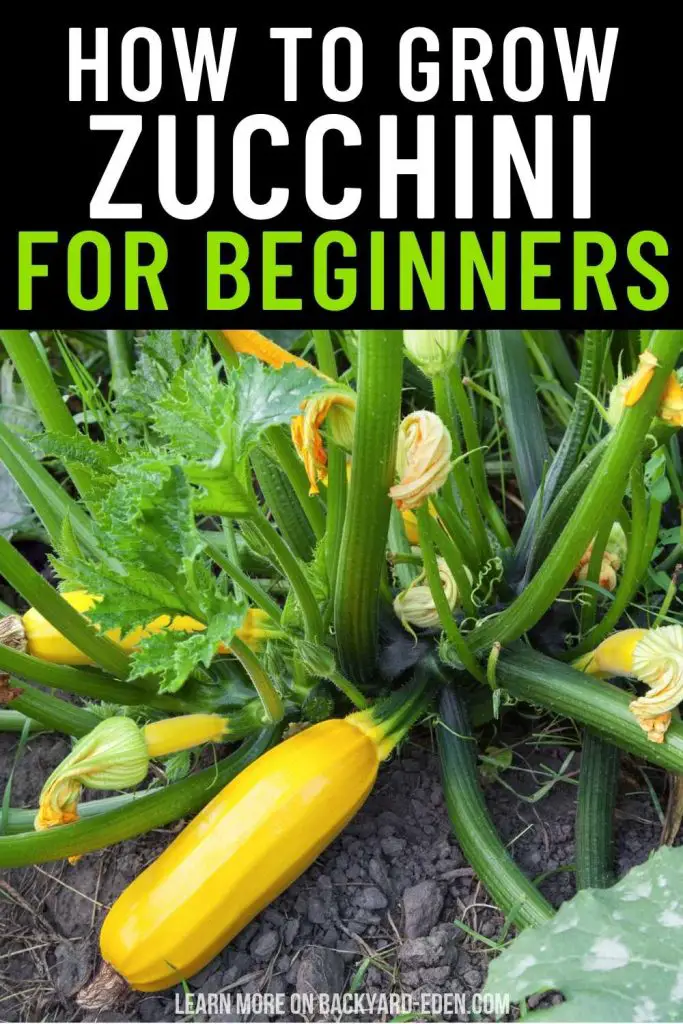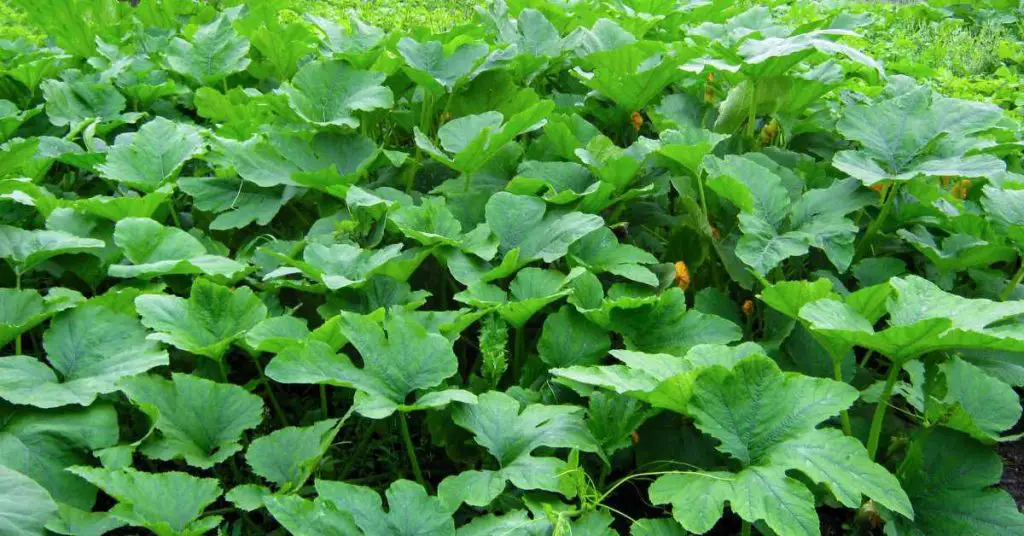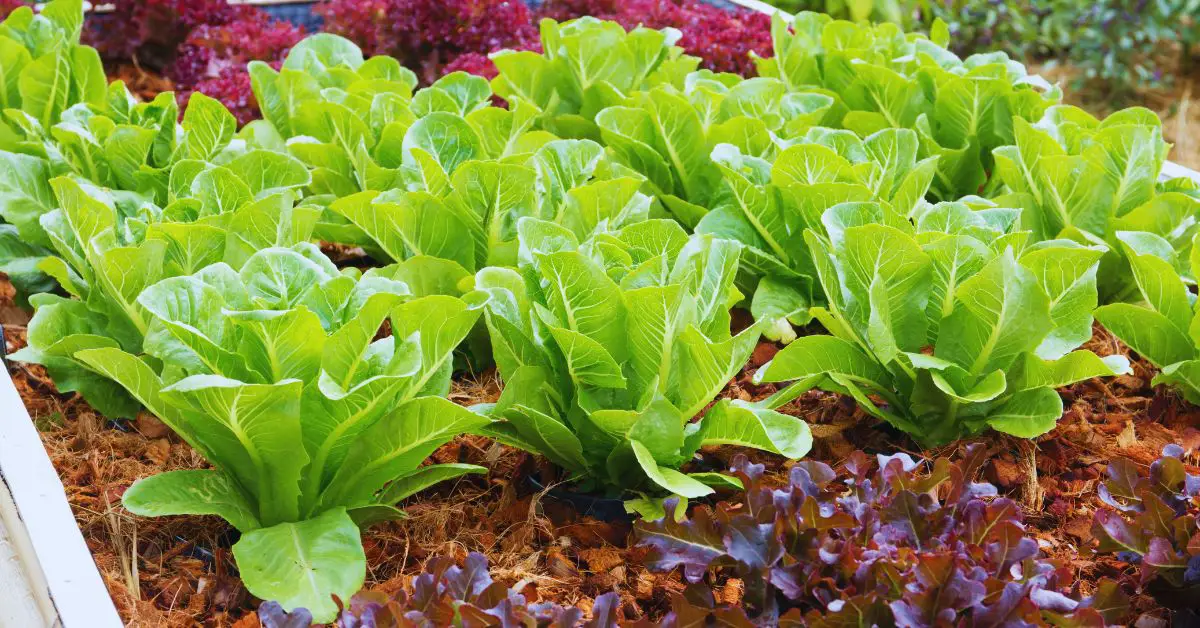You’re about to start on a journey to grow delicious zucchini, and with the right guidance, you’ll be enjoying a bountiful harvest in no time.
First, you’ll need to choose the perfect zucchini variety for your climate and preferences. But that’s just the beginning. You’ll also need to prepare the soil, sow the seeds at the right depth, and provide the ideal climate for growth.
And that’s still just the start. You’ll want to know how to water, prune, and harvest your zucchini to guarantee a maximum yield.
Let’s get started on this journey to growing amazing zucchini!

Key Takeaways
- Select a zucchini variety suitable for your climate and desired characteristics, considering factors like growth rate, disease resistance, and flavor profile.
- Prepare the soil by testing pH and nutrient content, aiming for a pH between 6.0 and 6.8, and adding compost to enrich the soil.
- Sow seeds 1 inch deep and 2-3 inches apart in rows or hills, ensuring soil temperature reaches at least 60°F (15°C) for optimal germination.
- Water deeply once or twice a week, maintaining a consistent schedule based on weather and soil conditions, and mulch around plants to retain moisture and regulate soil temperature.
- Regularly inspect plants for signs of pests and diseases, implementing integrated pest management techniques and harvesting every 2-3 days to promote a bountiful harvest.
Choosing the Right Zucchini Variety
When selecting a zucchini variety, you’ll encounter a multitude of options, each boasting unique characteristics, such as varying sizes, shapes, and skin colors, which can greatly impact the growing experience and flavor profile of your harvest.
Zucchini colors, for instance, can range from the familiar dark green to vibrant yellow, golden, and even white. Some varieties, like ‘Round Courgette’, have a more spherical shape, while others, like ‘Baby Ball’, are smaller and more cylindrical.
When choosing a variety, consider factors like growth rate, disease resistance, and desired flavor profile. If you’re looking for a high-yielding variety, ‘Black Beauty’ or ‘Costata Romanesco’ might be suitable options. For a sweeter, nuttier flavor, ‘Golden’ or ‘Yellow Crookneck’ could be the way to go.
Preparing the Soil for Zucchini
Your zucchini’s success relies heavily on the quality of the soil it’s grown in, so it’s essential that you prepare the soil properly to give your plants the best possible start.
Before planting, it’s important to test your soil to determine its pH level and nutrient content. Soil testing will help you identify any deficiencies, allowing you to make necessary adjustments. For ideal zucchini growth, your soil should have a pH between 6.0 and 6.8.
If your soil test reveals nutrient deficiencies, consider adding organic matter like compost to enrich the soil. Compost benefits your zucchini plants by improving soil structure, increasing water retention, and providing essential nutrients.
Mix 2-3 inches of compost into the top 6-8 inches of soil to create a nutrient-rich environment for your zucchini.
Sowing Zucchini Seeds Outdoors
With your soil prepared, you’re now ready to sow your zucchini seeds outdoors, directly into the enriched soil you’ve created. Make sure the soil temperature has reached at least 60°F (15°C), as zucchini seeds germinate best in warm conditions.
Sow the seeds 1 inch deep and 2-3 inches apart in rows that are 3 feet apart. You can also sow in hills, with 3-4 seeds per hill, spaced 3 feet apart. Cover the seeds with a thin layer of soil, gently firming it in place. Water the soil gently but thoroughly after sowing.
It’s essential to maintain consistent moisture during the germination period, usually 7-10 days. Keep the soil consistently moist, but not waterlogged, to promote healthy germination. As you sow, imagine the seeds sprouting into thriving zucchini plants, and you’ll be on your way to a bountiful harvest.
Creating the Ideal Climate
Zucchini plants thrive in a warm, humid microclimate, so it’s essential to create an ideal environment for maximum growth and productivity. You can achieve this by understanding the importance of microclimates.
Microclimates matter because they can greatly impact your zucchini plant’s growth. By creating a microclimate that mimics the warm, humid conditions found in zucchini’s native Mediterranean region, you’ll be rewarded with a bountiful harvest.
To create an ideal climate, focus on climate control. Start by selecting a location that receives full sun, which is vital for zucchini growth. Next, make sure the area is well-ventilated to prevent fungal diseases that thrive in humid environments.
Mulching around the plants will help retain moisture and regulate soil temperature. You can also use row covers or cold frames to extend the growing season and create a microclimate that’s 2-3°C warmer than the surrounding area.

Watering and Irrigation Tips
To guarantee proper hydration for your zucchini plants, it’s crucial to establish a consistent watering schedule. You’ll want to water them deeply once or twice a week, depending on weather conditions, to promote deep root growth and prevent shallow watering.
Watering Schedules
You’ll need to establish a consistent watering schedule, considering factors like weather, soil type, and the plant’s growth stage to guarantee your zucchini plants receive the right amount of moisture. Watering schedules can be tricky, but understanding the needs of your zucchini plants will help you get it right.
For instance, during hot and dry weather, your zucchini plants will require more frequent watering to prevent water stress. On the other hand, if you’re dealing with heavy clay or waterlogged soil, you’ll want to reduce watering to prevent water logging, which can lead to root rot.
To avoid water logging, make sure the soil isn’t waterlogged before watering again. Check the soil saturation by inserting your finger into the soil up to the knuckle. If the soil feels dry, it’s time to water. If it’s already saturated, wait a day or two before watering again.
Conserving Water Tips
By implementing efficient watering practices, you can greatly reduce water waste and optimize your irrigation system to provide your zucchini plants with the right amount of moisture. One effective way to conserve water is by using drip irrigation, which delivers water directly to the roots of the plants, reducing evaporation and runoff. This method allows you to water your zucchini plants precisely, without wasting a single drop.
Another way to conserve water is by collecting rainwater in rain barrels. This not only reduces your water bill but also provides a natural, chemical-free source of water for your plants. Make sure to cover the rain barrels with a mesh or screen to prevent debris and mosquito breeding.
Additionally, avoid overhead sprinklers, which can lead to water loss through evaporation and runoff. Instead, use soaker hoses or drip irrigation systems that target the roots of the plants.
Supporting Zucchini Plants Growth
Providing structural support to your zucchini plants is essential, since they’ve a natural tendency to spread out and climb, and can grow quite large if not properly pruned. You’ll want to provide stem support to keep your plants upright and encourage healthy growth.
One effective method is trellis training, where you train the stems to grow up a trellis or other support system. This not only keeps your plants organized but also makes harvesting easier. To set up a trellis, simply place it near your zucchini plants and gently twine the stems around the structure as they grow. You can use soft ties or clips to secure the stems if needed.
As your plants grow, you can continue to train them to climb up the trellis, providing the necessary support for best growth. By providing structural support, you’ll be rewarded with a bountiful harvest of delicious zucchini.
Fertilizing for Optimal Yield
To maximize your zucchini harvest, fertilizing with a well-rounded diet of nutrients is essential, as it directly impacts the yield and quality of your crop. You’ll want to focus on providing your zucchini plants with a balanced mix of nitrogen, phosphorus, and potassium.
A soil test can help determine your soil’s pH level and nutrient content, allowing you to adjust your fertilizer accordingly. Adding compost to your soil can provide numerous benefits, including improved soil structure, increased water retention, and a boost in beneficial microorganisms.
As you prepare your fertilizer, keep in mind that zucchini prefers a slightly acidic to neutral soil pH, ranging from 6.0 to 7.0. By incorporating organic matter like compost into your fertilizer routine, you’ll be well on your way to creating a nutrient-rich environment that fosters healthy, productive zucchini plants.
With a well-fertilized soil, you can expect to reap a bountiful harvest of delicious, nutritious zucchini all season long.
Pest and Disease Management
As you nurture your zucchini plants, you’ll need to remain vigilant for signs of pests and diseases that can quickly decimate your crop. Regularly inspect your plants for signs of trouble, such as holes in leaves, yellowing, or powdery mildew.
To prevent pest and disease issues, implement integrated pest management strategies. Companion planting is a great way to deter pests naturally. For example, planting nasturtiums alongside your zucchini can repel aphids and whiteflies.
Crop rotation is also essential to break disease cycles. Rotate your zucchini with non-cucurbit crops to minimize the risk of fungal diseases.
Additionally, maintain a clean garden by removing weeds and debris that can harbor pests and diseases. Disinfect your gardening tools regularly to prevent the spread of disease.
Identifying Common Zucchini Problems
When inspecting your zucchini plants, you’ll likely encounter some common issues that can impact their health and productivity. One common problem is yellowing leaves, which can be caused by overwatering, underwatering, or nutrient deficiencies. Check for signs of pests, diseases, or root rot, and adjust your watering schedule accordingly.
You may also notice a bitter taste in your harvested zucchinis, which can be a result of high temperatures, drought, or excessive nitrogen fertilizer application.
Inspect your plants regularly for signs of stress, such as wilted or curled leaves, and take corrective action promptly. Check for signs of pests like aphids, whiteflies, or spider mites, and treat infestations promptly. Fungal diseases like powdery mildew can also affect zucchini plants, so monitor for white, powdery patches on leaves and stems.
Pruning for Maximum Yield
Pruning your zucchini plants strategically can greatly enhance their productivity and encourage a bountiful harvest. As you tend to your zucchini plants, you’ll notice they can grow quite vigorously, producing multiple fruits and sprawling vines. To maximize your yield, it’s important to prune your plants regularly, especially during the summer months. This process, known as Summer Pruning, involves trimming back the tips of your zucchini vines to encourage bushy growth and promote fruiting. By doing so, you’ll stimulate the production of more fruit-bearing flowers, resulting in a greater harvest.
Another important aspect of pruning is Fruit Thinning. As your zucchinis grow, you’ll notice that some fruits may be smaller or more misshapen than others. Remove these weaker fruits to direct the plant’s energy towards the healthier, more robust ones. This selective pruning will make sure that the remaining fruits receive adequate nutrients and grow to their full potential.
Harvesting Zucchini at the Right Time
As you monitor your zucchini’s progress, remember that timing is crucial.
You’ll want to check on them frequently, as they can quickly go from perfect to oversized and seedy.
Check for Size Often
Regularly checking your zucchini plants guarantees you’ll harvest the fruits at their best size, before they become too large and seedy. To make sure you’re picking at the best time, create a zucchini calendar to track the days since planting. This will help you stay on top of size expectations, as most varieties are ready to harvest within 35 to 45 days of sowing.
Check your plants every 2-3 days, as zucchinis can grow rapidly. You’re looking for fruits that are around 6-8 inches long and about 1-2 inches in diameter. Avoid squeezing the fruits, as this can cause bruising. Instead, gently grasp the zucchini and twist it counterclockwise to remove it from the plant.
Harvesting at the right size ensures your zucchinis will be tender, flavorful, and free of seeds. By staying vigilant and checking your plants frequently, you’ll enjoy a bountiful harvest of delicious, healthy zucchinis.
Don’t Let It Grow
Timing is essential when harvesting zucchinis, and you must pick them at the right moment to guarantee peak flavor and texture. If you let them grow too long, they’ll become seedy, tough, and lose their flavor. Harvesting at the right time is vital, especially when working with space constraints.
You want to make the most of your garden bed, and letting zucchinis overgrow can lead to overcrowding, making it difficult to control weeds.
Check for size often, and harvest when they’re between 6-8 inches long. For bush varieties, harvest when they’re about 3-4 inches in diameter. Regular harvesting will encourage your plants to produce more, and you’ll enjoy a continuous supply of fresh zucchinis.
Don’t let them grow too big, as this can lead to a decrease in overall yield. By harvesting at the right time, you’ll be rewarded with a bountiful harvest, and your garden will thrive.
Storing and Preserving Zucchini
You’ll want to harvest zucchini at its peak freshness to guarantee it stores and preserves well, so it’s important to understand the best methods for extending its shelf life. Proper storage and preservation techniques will help maintain the nutritional value and flavor of your zucchini harvest.
When it comes to freezing, it’s vital to blanch zucchini to inactivate enzymes that cause spoilage. Slice or grate the zucchini, then blanch it in boiling water for 2-3 minutes. Immediately submerge it in an ice bath to stop the cooking process. Once cooled, package the zucchini in airtight containers or freezer bags, ensuring to remove as much air as possible before sealing.
Alternatively, you can dehydrate zucchini using a food dehydrator or your oven on the lowest heat setting. Slice the zucchini thinly and place it in a single layer on the dehydrator trays or baking sheets. Dehydrate at 135°F (57°C) for 6-8 hours or until crispy. Store the dried zucchini in airtight containers to preserve its flavor and nutritional value.
Troubleshooting Common Issues
What common pitfalls should you be prepared to tackle when growing zucchini, and how can you prevent them from ruining your harvest?
As a beginner, it’s important to anticipate and address potential issues that can affect your zucchini crop. One of the most common problems you’ll face is zucchini pests, such as aphids, whiteflies, and squash bugs. These pests can spread diseases and damage your plants, so it’s vital to monitor your plants regularly and take action quickly if you spot any signs of infestation.
Another issue you may encounter is soil contaminants, which can affect soil quality and hinder plant growth. Make sure to test your soil regularly and amend it as necessary to maintain appropriate pH levels and nutrient balance. Additionally, consider using organic amendments like compost to enhance soil structure and fertility.
Frequently Asked Questions
Can I Grow Zucchini in Containers or Pots?
You can definitely grow zucchini in containers or pots, but choose a pot that’s at least 5-7 gallons with good drainage and a well-balanced soil mix, such as a mix specifically designed for vegetables.
How Often Should I Rotate Zucchini Crops?
You should rotate your zucchini crops every 2-3 years to prevent soil depletion and disease buildup, employing crop rotation strategies that alternate with non-Cucurbitaceae family members to maintain soil health and fertility.
Can I Save Seeds From My Harvested Zucchini?
You can save seeds from your harvested zucchini, but be aware that seed longevity is typically 2-3 years, and hybrid varieties may not produce consistent results; research and plan carefully for best outcomes.
Will Zucchini Plants Attract Beneficial Insects?
As you nurture your zucchini plants, you’ll attract pollinator friends like bees and butterflies, which also aid in pest control, creating a harmonious ecosystem that benefits your crop and the environment.
Can I Eat Zucchini Flowers or Are They Inedible?
You can indulge in zucchini flowers, a delicacy rich in vitamins A and C, potassium, and antioxidants. These edible blooms offer a unique flavor and texture, making them a nutritious and tasty addition to your meals.
Conclusion
You’ve successfully navigated the journey of growing zucchini from seed to harvest. By selecting the right variety, preparing the soil, and providing ideal growing conditions, you’ve set yourself up for a bountiful yield.
With consistent watering, pruning, and pest management, you’ve guaranteed a healthy and thriving crop.
Now, enjoy the fruits of your labor and reap the rewards of your hard work – a delicious and nutritious harvest of fresh, homegrown zucchini.





